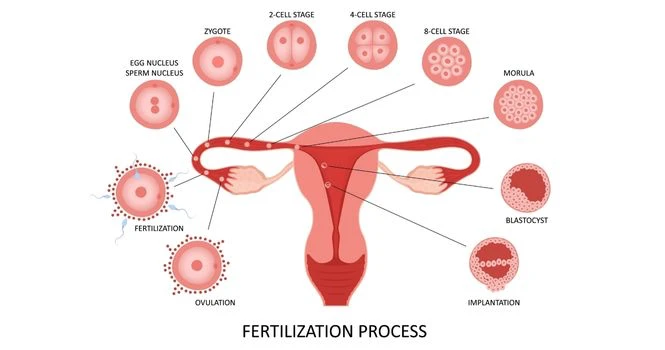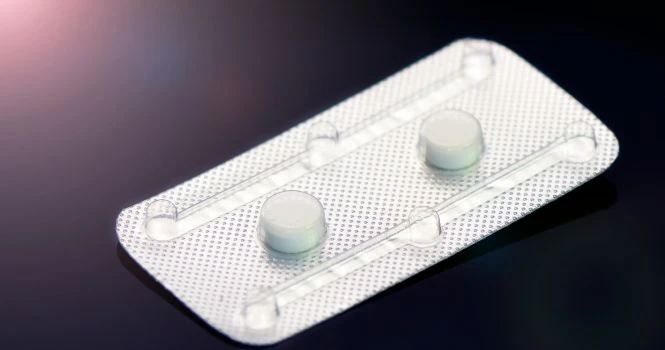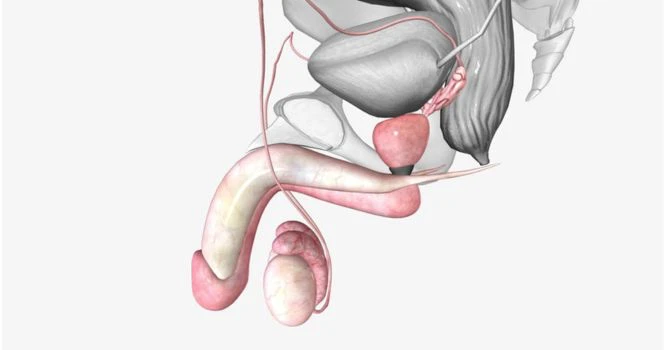The journey of pregnancy is like an amazing adventure, filled with lots of interesting changes and surprises, especially when you’re looking forward to having a new baby in the family.
A critical component of this journey is the hormone human chorionic gonadotropin, or hCG, which starts to rise after the successful implantation of a fertilized egg in the uterus.
But when exactly does this hCG start to rise and what does it mean for an expecting parent?
We will look into the intricacies of hCG levels, their role in early pregnancy, and the timeline you can expect these changes to follow.
Fertilization and Implantation Timeline
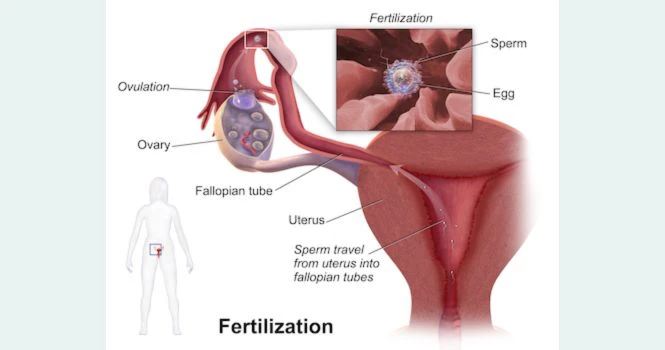
The journey to pregnancy begins with the fertilization of the egg by the sperm, which typically occurs in the fallopian tube, as seen in the image above. This fertilized egg, now called a zygote, then travels down the tube and into the uterus.
The process of the zygote embedding itself into the uterine lining is known as implantation.
Implantation typically occurs about 6-12 days after ovulation, or around 7-10 days after fertilization of the egg.
How long does implantation take to complete?
The entire process of implantation is usually complete within 48 hours.
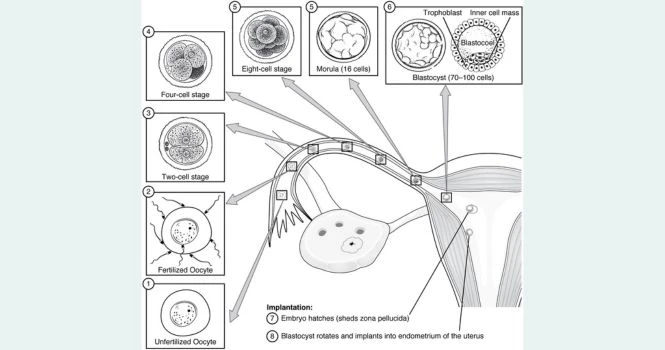
Is HCG Only Produced After Implantation?
HCG, or Human Chorionic Gonadotropin, is a hormone produced by the placenta and this process begins after the implantation of a fertilized egg in the uterus.
The production of HCG doesn’t begin until after the embryo implants into the uterus. It’s the detection of this hormone in a woman’s blood or urine that confirms pregnancy.
When a fertilized egg, now referred to as a blastocyst,(as seen in the above diagram) secures itself into the lining of the uterus, a remarkable sequence of events is set into motion.
Cells that are destined to form the placenta, known as trophoblast cells, kickstart the production of hCG.
This hormone plays a pivotal role, signaling to the body that pregnancy has begun. This prevents menstruation and enables the structure known as the corpus luteum (what’s left of the follicle that released the egg) to keep producing progesterone, a hormone vital for maintaining the pregnancy in its earliest stages.
As the pregnancy progresses and the placenta develops further, it continues to produce hCG. But that’s not all it does. The placenta also produces other key hormones, like progesterone and estrogen, which are essential for supporting the pregnancy and fostering the development of the fetus.
How Long After Implantation Does HCG Rise?
After a fertilized egg (embryo) implants into the uterine lining, typically around 7-10 days post-fertilization, the production of human chorionic gonadotropin (hCG) begins. This is a hormone produced primarily by cells that make up the placenta.
Within about 48 hours after implantation, small amounts of hCG can be detected in the mother’s bloodstream. The levels of hCG increase rapidly from that point, typically doubling approximately every 48-72 hours during the early weeks of pregnancy.
Therefore, if you’re using a home pregnancy test, it’s often suggested to wait until the first day of a missed period or after to ensure a more accurate reading, as hCG levels would be high enough by then to be detected by most tests.
Remember that these timelines can vary somewhat from person to person. Some may have a detectable hCG level slightly earlier or later, and hCG levels can be influenced by various factors, including the time of implantation and individual variations in hormone production.
HCG Levels After Implantation
The following timelines are just averages and the actual hCG levels can vary widely from person to person.
Factors such as the exact time of implantation, the rate at which your body produces hCG, and even the time of day the test is taken can all affect the specific hCG level.
Day of implantation:
A fertilized egg typically implants into the uterus about 7-10 days after ovulation, but it can range from 6-12 days. At this point, hCG production begins, but levels are too low to be detected by a pregnancy test.
7-10 days after implantation:
Around this time, hCG levels are typically about 10-50 mIU/mL. This is often the earliest point at which a blood test can detect the presence of hCG, signaling a pregnancy.
11-14 days after implantation (3-4 weeks from the last menstrual period):
hCG levels are generally around 10-708 mIU/mL. This is usually the time when a missed period might prompt someone to take a pregnancy test.
Most home pregnancy tests can detect hCG levels as low as 25 mIU/mL, so they will often be able to detect a pregnancy at this point.
15-21 days after implantation (4-5 weeks from the last menstrual period):
hCG levels typically increase dramatically during this time, ranging from around 216 – 7,680 mIU/mL.
22-28 days after implantation (5-6 weeks from the last menstrual period):
hCG levels continue to rise, usually falling between 1,080 – 56,500 mIU/mL.
29+ days after implantation (7+ weeks from the last menstrual period):
hCG levels may range anywhere from 4,060 – 165,400 mIU/mL.
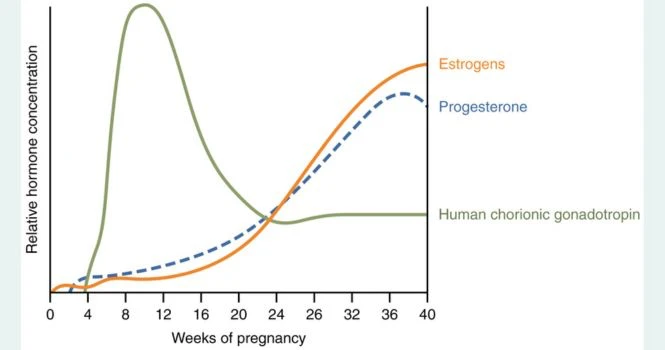
A HCG levels after implantation chart would show an exponential curve as seen above, reflecting the rapid increase in HCG levels after implantation.
It’s essential to remember that HCG levels can vary widely among different women and different pregnancies in the same woman.
Symptoms of Rising HCG Levels
Rising HCG levels can lead to early signs of pregnancy. These symptoms might include fatigue, breast tenderness, frequent urination, nausea (morning sickness), and increased sensitivity to smells. However, not every woman experiences these symptoms, and their presence or absence is not a definitive sign of pregnancy.
When to Test After Implantation Bleeding
Implantation bleeding is another sign of early pregnancy. It typically occurs a few days before the expected period, around the time of implantation. But not all women experience implantation bleeding.
If you experience what you believe to be implantation bleeding, you may wonder,
How many days after implantation can you test?
As HCG starts to rise after implantation, it’s generally a good idea to wait a few days after the bleeding to take a pregnancy test. This delay allows HCG levels to increase enough to be detected accurately by a pregnancy test.
So, if you’re considering taking a pregnancy test 1 day after implantation bleeding, you might want to wait a little longer to ensure more accurate results.
Conclusion
Understanding the timeline of HCG production after implantation is crucial for accurately interpreting pregnancy tests and recognizing early pregnancy symptoms. Remember, every woman’s body is unique, and these timelines might vary.
If you believe you might be pregnant and are unsure about any symptoms or test results, it’s always best to consult your doctor for advice and confirmation.



